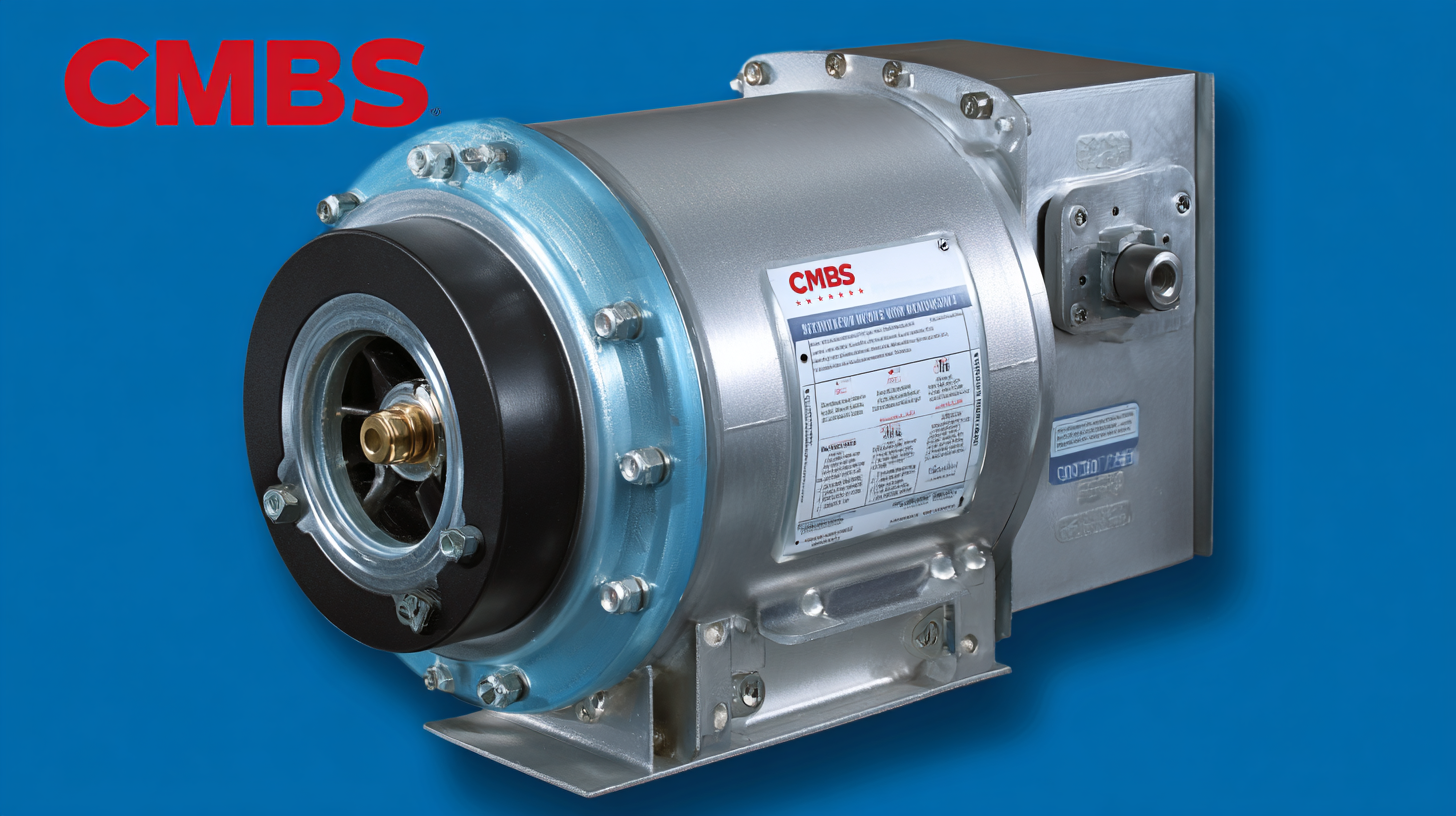




In the ever-evolving landscape of global trade, understanding the complexities of importing high-quality components is essential for success in various industries. Among these components, the Furnace Blower Motor stands out as a critical element in heating systems, significantly impacting efficiency, performance, and longevity. This blog will explore the process of importing the best Furnace Blower Motor while adhering to international standards. By examining five key reasons that highlight the importance of selecting the right motor, such as energy efficiency, reliability, compliance with safety regulations, cost-effectiveness, and market competitiveness, readers will gain a comprehensive insight into making informed decisions. Whether you are a seasoned importer or a newcomer to the market, this tutorial will equip you with valuable knowledge to navigate the complexities of global standards and ensure the successful procurement of Furnace Blower Motors.

When selecting a furnace blower motor, it's crucial to understand the different types available in the market. The two primary categories are permanently split capacitor (PSC) motors and electronically commutated motors (ECMs). According to a report by the U.S. Department of Energy, ECMs are becoming increasingly popular due to their energy efficiency, which can be up to 75% higher than traditional PSC motors. This significant difference can lead to substantial energy savings over time, making ECMs a smart investment for both residential and commercial applications.
Additionally, there's a growing trend towards variable speed motors in the HVAC industry. As highlighted in a study by Navigant Research, the adoption rate of variable speed blower motors is expected to increase by nearly 30% over the next few years. These motors offer improved control over airflow, resulting in enhanced indoor comfort and reduced noise levels. Understanding the distinctions between these motor types and their operational efficiencies is essential for making informed purchasing decisions that align with your specific needs.

When importing furnace blower motors, understanding key global standards is crucial to ensure product quality, safety, and compliance. First and foremost, one must consider the International Electrotechnical Commission (IEC) standards, which provide guidelines on electrical and mechanical performance. These standards help in assessing the efficiency of the motors and ensuring they meet safety requirements to avoid hazards in domestic and commercial environments. Compliance with IEC standards can also streamline the certification process in various countries, making it easier to market and distribute the products.
Another significant standard to keep in mind is the Underwriters Laboratories (UL) certification. UL provides safety benchmarks specifically designed for electrical equipment, including furnace blower motors. Having a UL mark not only guarantees safety but also enhances your product’s credibility in the marketplace. Additionally, recognizing environmental regulations such as the Restriction of Hazardous Substances (RoHS) directive is important, as it forbids the use of certain hazardous substances in electrical components, ensuring that products are safe for consumers and the environment. Importers should always strive to align their products with these global standards to mitigate risks and expand their market reach.
| Standard Type | Standard Name | Region | Certification Body | Compliance Requirements |
|---|---|---|---|---|
| Electrical Safety | UL 507 | United States | Underwriters Laboratories | Requires proper testing for fire and electric shock hazards. |
| Product Safety | IEC 60335-2-80 | International | International Electrotechnical Commission | Safety requirements for fans and similar appliances. |
| Energy Efficiency | DOE Energy Compliance | United States | U.S. Department of Energy | Set minimum energy efficiency standards for HVAC equipment. |
| Environmental | RoHS | European Union | European Commission | Restriction of hazardous substances in electrical and electronic equipment. |
| Quality Management | ISO 9001 | International | International Organization for Standardization | Requirements for establishing a quality management system. |
When it comes to selecting the best supplier for furnace blower motors, several key factors should be considered to ensure a wise investment. First and foremost, it's essential to assess the supplier's reputation and experience in the industry. Look for suppliers that have a proven track record of providing high-quality products and excellent customer service. Customer reviews and testimonials can offer valuable insights into their reliability and the performance of their blower motors.
In addition to reputation, evaluating the range of products offered by potential suppliers is crucial. A good supplier should provide various options that cater to different furnace types and specifications. This diversity allows you to compare features, pricing, and warranty options. Furthermore, consider suppliers that are compliant with international quality standards, as this compliance is often indicative of their commitment to excellence and innovation in manufacturing. By doing thorough research and asking the right questions, you can confidently choose a supplier that meets your needs for furnace blower motors.
When importing furnace blower motors, understanding customs regulations and compliance is crucial for a smooth transaction. Each country has specific rules governing the importation of electric motors, including safety standards, labeling requirements, and documentation. Familiarizing yourself with the Harmonized System (HS) codes relevant to furnace blower motors ensures that you accurately categorize your products. This not only aids in determining tariff rates but also assists in avoiding delays at customs.
Additionally, working with customs brokers can streamline the import process. These professionals are well-versed in the intricacies of import regulations and can help you navigate through the paperwork, ensuring all necessary documents—such as the bill of lading, commercial invoice, and import permits—are in order. Moreover, staying updated on any changes in trade agreements and tariffs is vital, as these can impact the cost and feasibility of importing your furnace blower motors. By paying close attention to these customs regulations, you can mitigate risks and enhance the efficiency of your supply chain.
Importing furnace blower motors can be fraught with challenges that often deter businesses from pursuing optimal solutions. One of the primary hurdles is navigating the diverse regulatory standards required across different countries. For instance, a report by the International Electrotechnical Commission (IEC) indicates that compliance with safety and performance standards, like those specified in IEC 60034 for rotating electrical machines, is essential for successful market entry. Failure to comply not only risks sanctions but can also lead to costly delays in the supply chain.

Additionally, fluctuations in global trade policies and tariffs can present significant operational challenges. According to a recent analysis by the U.S. International Trade Commission, recent tariff changes have impacted the cost structure for importing electrical components, including furnace blower motors. Businesses must conduct thorough market research to identify potential tariffs and trade agreements, ensuring they are prepared to adapt their strategies to mitigate risks. Utilizing trade consultants who specialize in this sector can provide crucial insights and help businesses navigate the complex landscape of international trade, enabling them to import high-quality products more efficiently.


